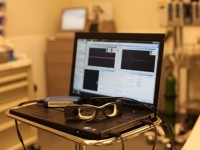Ruling out the wrong diagnosis

Although misdiagnosis may kill up to 80,000 annually—more people each year than firearms and motor vehicle accidents combined—you won’t find it on the list of the country’s leading causes of death.
Most Americans don’t realize how frequently well-meaning medical providers get it wrong. Just last year Johns Hopkins researchers found that one in 12 ICU patients die from something other than what they were being treated for. Aside from a handful of instances covered by the national media, misdiagnosis hasn’t received much attention from the public or the medical community. One such tragedy is the death of Rory Staunton, a 12-year-old boy who was treated for an upset stomach and dehydration instead of sepsis, a severe response to infection that requires immediate treatment with antibiotics. To make a complex diagnosis like sepsis, a doctor may need to assess a couple dozen different factors.